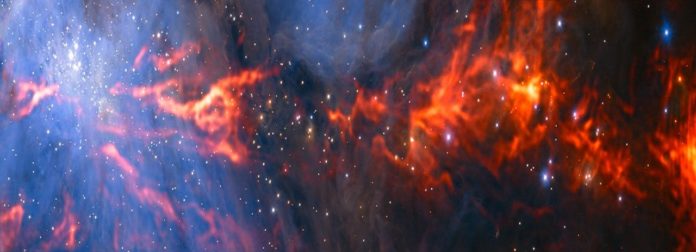New information from the Atacama Large Millimeter/submillimeter Array (ALMA) and different telescopes have been utilized to demonstrate a web of filaments in the Orion Nebula. These highlights seem intensely hot and blazing in this sensational picture, yet in actuality are cold to the point that stargazers must utilize telescopes like ALMA to watch them.
The telescoped have captured a spectacular and unusual image that shows part of the famous ESO‘s Very Large Telescope, appeared in blue. The group of splendid blue-white stars at the upper-left is the Trapezium Cluster — made up of hot youthful stars that are just a couple of million years of age.
The Filaments in this image are of cold gas, visible to telescopes working in the millimeter wavelength range. They are undetectable at both optical and infrared wavelengths, making ALMA one of the main instruments accessible for astronomers to think about them. This gas offers rise to infant stars — it gradually falls under the power of its own gravity until the point that it is adequately compacted to shape a protostar — the antecedent to a star.
Scientists are now studying these filaments to learn more about their structure and make-up. They looking particularly for signatures of diazenylium gas, which makes up part of these structures.
The original release of the paper can be read here.
